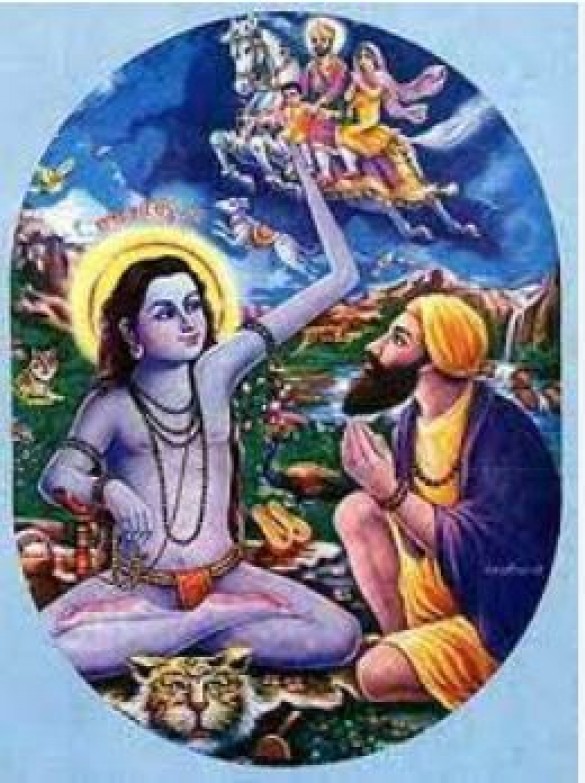
Baba Chand Ji elder son of Guru Nanak Dev Ji founder of Sikhism and Mata Sulakhani. He was born in 1494, in Sultanpur Lodhi, Kapurthala, and Punjab. Sri Chand had a reputation of saintliness, and was respected and liked by all. Bibi Nanaki Ji took Sri Chand and adopted him as her own son. This type of arrangement was a quite common and accepted custom at that time. Sri Chand was a renounciate yogi.
Baba Sri Chand Ji’s love and reverence for his father Guru Nanak Dev Ji cannot be stressed enough. And similarly, Guru Nanak Dev Ji’s love for his elder son is something to be admired by all families. History has played a cruel trick on this relationship, often portraying Babaji as one passed over in the appointment” as the Guru’s successor and therefore casting Babaji in conflict with the ensuing Gurus. Nothing could be further from the truth. And nowhere could a child’s love be more apparent than in his hymn of praise for Guru Nanak – Aarta – which he composed and had the whole Kartarpur Sangat sing to greet and welcome their Great Guru home from his third Udasi.
Also Read: Sikhism: Embracing the Teachings of Guru Nanak in the Modern Age
Shri Chand meditated for hours in the solitude of forests, without any fear of carnivores. Miracles came naturally to him. At Shankheshvara, Gujarat he made a spring flow by just blowing his conch. While in Kashmir, he took out a burning piece of wood from his dhuna (hearth), and buried it, materializing green leaves, to humble the representatives of Nawab Yakub Khan, who had come to arrest him on account of his unorthodox views. At Chamba, when a boatman refused to ferry him across the Ravi, he made a large stone move like a boat.
Shri Chand travelled as far as Sindh, Baluchistan, Kabul, Kandhar and Peshawar meeting holy persons of different sects and creeds. He visited Haridwar, Kailasha, Mansarovar, Nepal and Bhutan in the north, Assam and Puri in the east, Somnath in the west, and Rameshvaram, Kanyakumari and Sinhal Dvipa in the south, spreading the knowledge of the self. He made no distinction of caste and creed and brought different communities together through his message of love and peace.
Also Read: Gurudwara Rakab Ganj Sahib: Symbol of Faith
Shri Chanda’s philosophy is called the conjunction of the paths of devotion and knowledge. His God was both saguna (with attributes) and nirguna (without attributes). He popularised worship of five deities — Ganesha, Surya, Vishnu, Shiva and Shakti – in line with Adi Shankaracharya, to dilute sectarian differences. He believed in the theory of Karma and reincarnation. Central to his teachings were truthfulness, contentment, forgiveness, self-discipline, and the unity of mankind.
Shri Chanda’s works include among others, Arta Shri Guru Nanak Dev, comprising of ten verses in honour of his father; Guru Gayatri, addressed to his spiritual preceptor; Sahasranama, ‘thousand names’ in praise of the Supreme Being; Panchadeva-shatakam, eight hymns to five deities, and Matravani (Matra shastra) a succinct presentation of the Udasi philosophy.
Also Read: Manji sahib: Diwan Hall
Shri Chand built a humble memorial to Guru Nanak Dev by salvaging the urn containing his cremated ashes from the fury of flood at Kartarpur (Pakistan), and reburying it at a place that came to be known as Dera Baba Nanak (Pakistan). Due to his humility and deep spirituality, the Sikh gurus held him in deep reverence. At Barth, his tapasthali, he anointed Baba Gurditta, son of Guru Hargobind, as his successor, investing him with the Udasi insignia – seli (woolen cord), topi (cap), and much more besides.
Also Read: Gurudwara Sri Tarn Taran: A Saving Boat